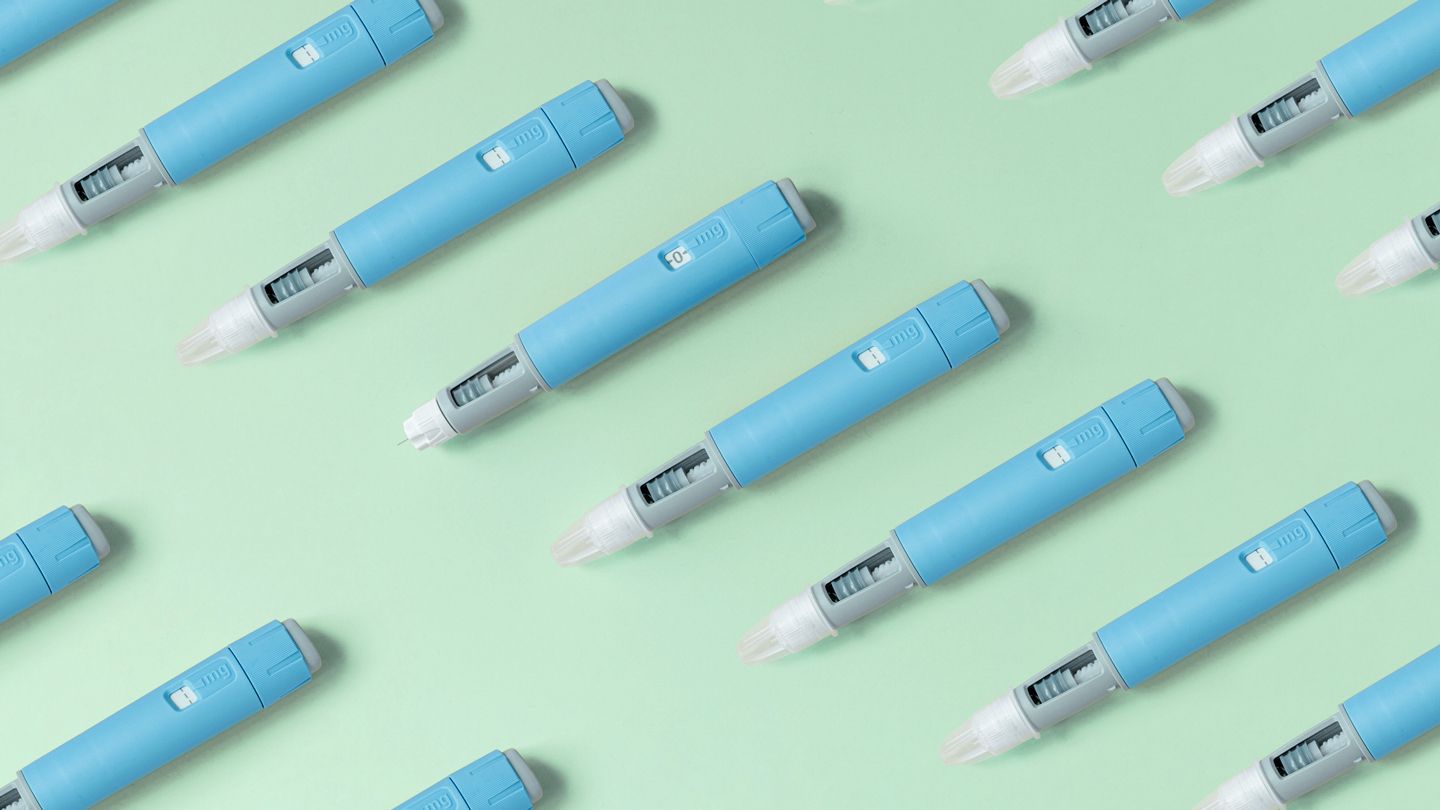GLP-1s are highly effective for people who have type 2 diabetes or are at risk of developing it. If you’re considering taking them, you probably have lots of questions.
Here, Clifton Jackness, MD, a board-certified endocrinologist at NYU-Langone Medical Center and assistant professor at the Lenox Hill Hospital in New York City, answers common questions about GLP-1s for type 2 diabetes, from how they work to whether insurance will cover them.
Editor’s note: This interview has been edited for length and clarity.
Everyday Health: What are GLP-1 agonists, and when are they recommended for people with type 2 diabetes?
Dr. Clifton Jackness: GLP-1s are a class of medication used to treat type 2 diabetes and obesity. The newer ones are weekly injections that harness the body’s own hormones and add to them to control blood sugars and the amount of insulin that gets secreted by pancreatic cells.
They are recommended for people with type 2 diabetes, as well as people who have elevated blood sugar levels and who have tried other ways to control their diabetes that didn’t work.
EH: How do GLP-1s help lower blood sugar levels?
CJ: GLP-1 medications work by mimicking a naturally occurring hormone in the body that’s also called GLP-1. Everyone produces it. It’s part of a family of gut hormones called incretins, which are activated when you eat and drink. Incretins tell your pancreas to produce more insulin, which helps shuttle glucose from your bloodstream to your cells, keeping your blood sugar steady between meals.
Because GLP-1s can also slow down the rate that food and liquid move through your digestive system, they may also keep you feeling fuller, longer. That, in turn, prevents you from feeling “hangry” between meals.
EH: How long does a GLP-1 take to start working?
CJ: You will feel it working between 12 and 24 hours after your first injection, though it’ll take a little longer to see a change in your blood sugar levels.
I always tell people that they’ll experience the most side effects in the first week. Your appetite is very much suppressed, you may feel like there are stones in your stomach, and your cravings are almost gone. Those effects go away after the first week or two.
In the beginning, people often think the drugs aren’t working, but they just take a little time to kick in. Your A1C should go down by at least 1.5 percent within three months of taking a GLP-1.
EH: What dose should I take?
CJ: Ideally, you should start on the lowest dose. Most people want to take the least amount of medicine and get the most benefit, and that’s the way most endocrinologists do it.
Plus, there are drawbacks to taking too much of a GLP-1 right away. Since the drug can cause side effects, especially in the early stages, you can lose weight too rapidly.
EH: Is there a chance I’ll have severe side effects that cause me to stop taking the drugs?
CJ: Possibly, but probably not. I try to do a lot of counseling with my patients about the side effects and make sure they know what to expect. The most common side effect is nausea.
There are ways to lessen some of the side effects. For example, it helps to eat fresh, whole foods. Eating high-fat meals and foods high in simple sugars while taking a GLP-1 causes more diarrhea and nausea. Luckily, most people will feel like eating whole foods instead of heavy, fattening foods.
EH: How do I take them? And what if I have a fear of needles?
CJ: Most GLP-1s are injected weekly. But they are also available in pill form.
Some come in automatic pens, where you don’t see the needle. You still have to inject it, and there is a needle, but it’s sort of hidden in an automatic mechanism.
One does have a really small, 4- or 5-millimeter pen tip. It comes in more of an insulin pen-type device. Ten or 12 years ago, when we were trying to use earlier forms that were daily or twice a day, we had a hard time convincing patients to use the injection. It took a lot more time for instruction. Now, people seem to be much more willing to use the injections. There doesn’t seem to be that fear of injecting anymore. For most people, they’re really easy and almost pain free.
As for the pill, because it’s working with the gut hormones, it has to be taken while you’re fasting. You need to take it with 4 ounces of water and then you can’t eat or drink for another 30 minutes, so it can absorb.
EH: Are the injection pens pretty foolproof, or is there any way to mess up when using one?
CJ: It’s mostly foolproof. One caveat, though: The medications need to be refrigerated, and if your refrigerator is too cold, the medication will freeze and the whole mechanism will get jammed up.
EH: Is low blood sugar a possible side effect?
CJ: Yes, but it’s not common if you’re taking a GLP-1 alone. If you have diabetes and are taking it along with other medications, especially some of the older ones or insulin that are designed to lower blood sugar quickly, these will definitely add potency. So those other medicines need to be tapered, at least while you’re starting the GLP-1.
You might also want to wear a continuous glucose monitor to monitor your blood sugar. They have alarms if your blood sugar goes too low.
EH: Is there anyone who shouldn’t take a GLP-1?
Women who are pregnant also shouldn’t take a GLP-1, because it’s not approved in pregnancy. It goes through the placenta. Same goes for women who are breastfeeding.
Anyone who has severe gastroparesis or advanced gastrointestinal constipation problems — not just occasional constipation — shouldn’t take a GLP-1. And anyone with anorexia or another eating disorder shouldn’t take these drugs.
EH: Do I need to see an endocrinologist to get a GLP-1 prescription?
CJ: I would like to say yes, but there aren’t enough endocrinologists actively practicing, and in some areas, you might not have access to one. But your prescriber should at least be an internal medicine primary care provider — someone with a degree who will see you in person and follow up adequately.
For 90 to 99 percent of people, these medications are relatively safe. But to maximize the benefit, you need to have blood tests that check your iron, B12, and thyroid levels. The medications are safe, but they’re still prescriptions, so it’s better to see a doctor in person rather than go to an online pharmacy.
EH: Will insurance always cover GLP-1s for diabetes?
CJ: If you have type 2 diabetes with an A1C greater than 6.5 to 7.5, your insurance company might cover a GLP-1.
In my practice, we’re totally committed to our patients and want them to have what they need. But I’m the gatekeeper, in terms of who really should be on a GLP-1. I don’t prescribe them to just anyone who asks. If someone has additional comorbidities or additional conditions that warrant their use, we’ll fight for that patient. But given the cost and popularity of these drugs, the insurance companies have aligned with exactly what the FDA criteria are for covering GLP-1s.
EH: Is it possible to appeal an insurance denial with the help of my doctor?
CJ: It’s possible, but it doesn’t always work. Insurance companies can be strict about this. Medicare, especially, wants to see more long-term benefits. Medicare will cover all of the older GLP-1s for diabetes with an A1C over 6.5 three months apart, the correct criteria for diagnosing diabetes.
EH: Will I be on a GLP-1 for the rest of my life?
CJ: There’s a chance you may be. But for people with diabetes, the changes in their life are astounding and usually, they don’t mind staying on it. If you have diabetes, you’re going to be on some medication, so why not be on the best one for you?
Read the full article here




